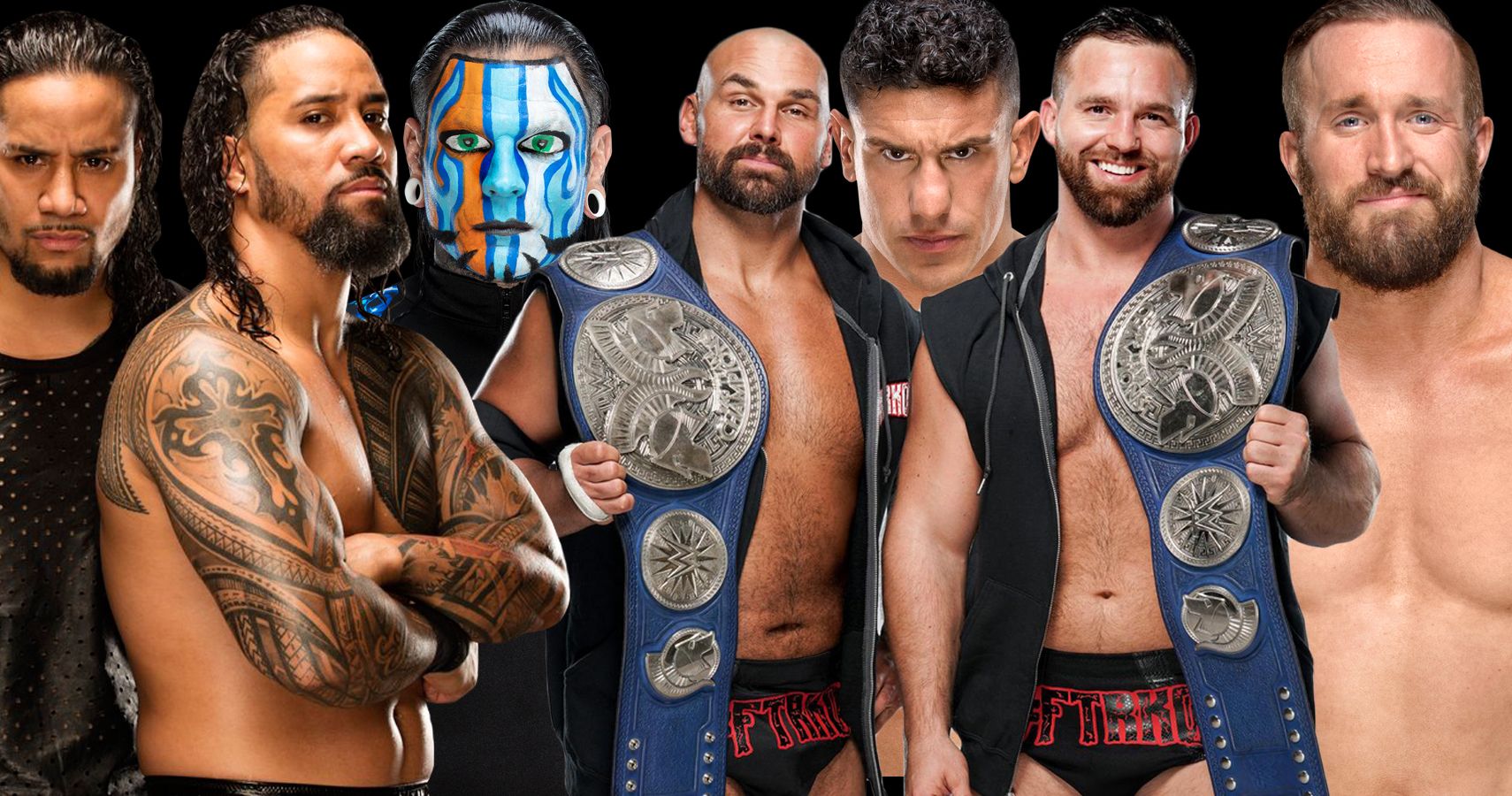WWE, the epitome of sports entertainment, is known not only for its high-octane matches, larger-than-life superstars, and compelling storylines but also for the inevitable releases that occur throughout the year. Wrestlers being released by the company is something fans have witnessed for years, but why do these releases happen, and how do they affect the talent and the promotion itself? This article delves into the world of WWE releases, exploring the reasons behind them, the impact on the wrestlers involved, and how they shape the business landscape.
The Complex Nature of WWE Releases

WWE, like any other major corporation, is constantly evolving and adapting to changing market demands. However, unlike many other industries, the “product” in WWE is built on the backs of human talent—professional wrestlers who contribute their physicality, personalities, and performances to bring the company’s vision to life. When these wrestlers are released, it’s not just a matter of losing employees; it’s about reshaping the entire entertainment landscape.
The Different Types of Releases
There are multiple reasons why a WWE superstar may be let go, and not all releases are the same. These releases can be categorized into the following types:
- Talent Cuts: These are the most common types of releases. They occur when WWE decides that a particular wrestler no longer fits the company’s vision or strategy. These cuts are often driven by the wrestler’s performance, popularity, or lack of chemistry with the audience.
- Budget Cuts: These releases happen when WWE needs to trim costs due to financial pressures. This can be a response to declining revenue, a shift in business direction, or the need to streamline the roster for more effective television programming.
- Injury-Related Releases: Some wrestlers are released because of ongoing injuries that prevent them from competing at a full-time level. While WWE often makes exceptions for top-tier talent, a wrestler’s inability to stay healthy can lead to their release.
- Personal Issues or Behavioral Concerns: Occasionally, releases are driven by off-screen factors, such as personal issues or behavioral concerns that might tarnish WWE’s family-friendly image. This category includes instances where a wrestler’s actions (inside or outside the ring) lead to public controversy.
- Creative Decisions: In some cases, the release of a wrestler is a result of changes in creative direction. A wrestler who was once considered a top draw may find themselves without a significant role if the company’s creative team decides to pivot in another direction.
Reasons Behind WWE Releases

While there are several types of releases, there are some core reasons that remain consistent throughout the years. Let’s take a closer look at why WWE releases its talent and how those reasons impact the company.
1. Financial Constraints and Budget Cuts
WWE, like any publicly traded company, is accountable to its shareholders. If the company faces financial difficulties or sees a downturn in revenue from TV deals, live events, or pay-per-views, cuts become a way to maintain profitability.
For instance, during the COVID-19 pandemic, WWE faced unprecedented financial pressure due to the cancellation of live events and a loss of in-person ticket sales. As a result, the company released dozens of talents in 2020, citing “budget cuts” as the reason. While the pandemic was an unusual circumstance, budget cuts have remained a valid excuse for talent cuts, especially during periods of lower profitability.
Moreover, WWE often invests in new stars and developmental talent through its NXT brand. When the company is focused on building future stars, the need for space on the roster can lead to the release of established names.
2. Creative Differences and Booking Decisions

One of the most common reasons for WWE releases is creative differences. WWE’s booking decisions are often dictated by the overarching storylines they want to tell. A wrestler who might not fit into these narratives, or who struggles to adapt to changing storylines, may find themselves released.
Additionally, there are instances where wrestlers simply don’t connect with the fans in the way that WWE expects them to. Fans are the lifeblood of professional wrestling, and if a wrestler’s character doesn’t resonate with the audience, it can lead to their eventual release. WWE prides itself on showcasing personalities that engage and entertain, so any wrestler who doesn’t get over with the crowd may not stay in the company long.
Another factor is the changing nature of the WWE product. For years, WWE has attempted to evolve its programming from the more edgy, adult-themed content of the Attitude Era to the more family-friendly product seen today. Wrestlers who were more suited to the previous “edgy” era might not be able to fit into the current mold, leading to their release.
3. Injury-Related Releases
Professional wrestling is physically demanding, and injuries are an inevitable part of the business. WWE is no stranger to releasing talent due to long-term injuries. Wrestlers like Daniel Bryan, Edge, and even Stone Cold Steve Austin were once forced to retire or leave due to career-threatening injuries. While some, like Bryan and Edge, eventually made successful comebacks, many other wrestlers aren’t so lucky.
WWE also maintains a strict health and wellness policy, which aims to protect the long-term well-being of its performers. If a wrestler suffers repeated injuries that prevent them from competing at a high level, it’s often in the best interest of both the talent and the company to part ways. This ensures that the talent has the time to recover and also allows WWE to continue moving forward with fresh, healthy talent.
4. Company Vision and Changing Direction

WWE’s strategic direction can shift based on various factors—such as the market demands, management decisions, or changes in the broader entertainment landscape. Sometimes, talent that was once a part of the company’s vision is no longer a fit when the company shifts its focus.
For example, during the early 2000s, WWE had a massive influx of top-tier talent, but many of these stars were part of a different creative era. As the company moved towards a younger generation of wrestlers, older talents or those with a more niche appeal found themselves cut or underutilized.
In recent years, WWE has been focused on developing new talent through its NXT developmental brand. Wrestlers who were once on the main roster may find themselves without a spot in WWE’s ever-evolving structure.
5. Behavioral Issues and Public Image Concerns
WWE, as a publicly traded company, is acutely aware of its public image. As a result, any scandal or negative press involving one of its stars can lead to their release. WWE’s family-friendly brand requires a certain level of professionalism from its performers, and any deviation from that standard can result in termination.
In some high-profile cases, like that of Enzo Amore, wrestlers were released following allegations of misconduct, even though they maintained their innocence. WWE’s decision to release talent in these instances is often driven by the desire to protect the company’s image and avoid public relations headaches.
The Impact of WWE Releases

Releases in WWE are not just business decisions; they have far-reaching effects on both the wrestlers and the company. Here’s how these cuts can impact the key stakeholders:
1. Wrestlers’ Careers
For the wrestlers themselves, being released from WWE can be both a setback and an opportunity. While many superstars thrive in WWE’s spotlight, the company’s size and complexity can sometimes limit a wrestler’s creative freedom. A release can provide an opportunity for wrestlers to reinvent themselves or pursue opportunities in other promotions like AEW, Impact Wrestling, or New Japan Pro Wrestling.
On the flip side, some releases are devastating for wrestlers who have invested years of their lives in WWE. Without the mainstream exposure that WWE offers, these individuals often struggle to find their footing in the world of independent wrestling. It can be especially hard for those who have become accustomed to WWE’s luxurious travel, large paychecks, and media opportunities.
2. The Impact on WWE’s Brand

Although WWE’s main focus is always the product, talent releases can sometimes hurt the company’s public image. Fans develop strong attachments to wrestlers, and seeing a beloved star released can lead to backlash and dissatisfaction. For example, when WWE released Bray Wyatt in 2021, many fans were upset, believing that Wyatt was a unique and irreplaceable part of the company’s creative fabric.
At the same time, WWE’s decision-making process has proven to be highly pragmatic. Releases allow the company to adapt, make room for new talent, and pursue fresh creative directions.
3. Effect on Storylines and TV Ratings
From a storyline perspective, releasing talent can create gaps in existing narratives. A wrestler who is in the middle of a high-profile feud or storyline will often be written out abruptly if they are let go, which can disrupt continuity. Fans of the storyline may feel frustrated if a major character is removed without resolution, leading to a loss of viewer interest.
Additionally, these cuts may also affect TV ratings. Popular wrestlers who are released may take part of the audience with them, as fans tune into other promotions to follow their careers.
Conclusion
WWE releases are an inevitable part of the wrestling business. While the reasons for these cuts vary, they are often driven by a combination of financial pressures, creative differences, and the constantly changing nature of the sports entertainment industry. For WWE, these decisions are about staying competitive and ensuring the longevity of the company, even if that means parting ways with some of



